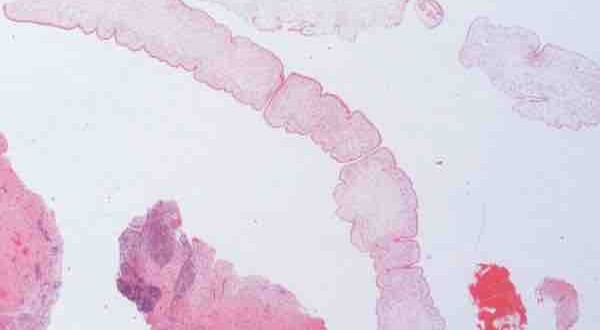A parasitic tapeworm lived in the brain of British man for four years before doctors realised it was there, it has emerged.
The 50 year old first visited doctors in 2008 suffering from headaches, seizures, memory loss and complaining that his sense of smell had changed
Tapeworms are parasites that are most commonly found living in the gut, causing symptoms such as weakness, weight loss and abdominal pain. However, the larvae of some species of tapeworm are able to travel further afield to areas such as the eyes, the brain and spinal cord.
A 50-year-old man of Chinese ethnicity was admitted to hospital in the East of England after reporting symptoms of headaches, seizures, altered smell and memory impairment. The patient had lived in the UK for 20 years but visited his homeland often. After testing negative for a range of diseases and not presenting any other abnormalities, doctors began to take a series of MRI images of his brain. Over the course of four years, they noticed a lesion migrate at least 5 cm across his brain, and after taking a biopsy from his left thalamus, they discovered a 1 cm long ribbon-shaped larval worm. The patient, who remains anonymous, was cured of his infection by the operation and is now recovering.
Small samples of the worm were sent to researchers at the Wellcome Trust Sanger Institute, where they began to investigate its genome. Through sequencing its DNA, they identified it as Spirometra erinaceieuropaei, a rare tapeworm species typically found in China, South Korea, Japan and Thailand, and known to cause infection by ingesting undercooked frogs or snakes, using frog meat for treating wounds, and ingesting contaminated water.
The researchers sequenced the worm’s entire genome for the first time, measuring it as 1.26 billion base pairs long, which is currently the largest reported genome for any flatworm. This was despite the fact they had such a small sample to work from after removal from the patient’s brain. By investigating specific sections of the worm’s genome, they were also able to identify genes for resistance to certain treatments, and other potential drugs targets.
Lead author Hayley Bennett from the Wellcome Trust Sanger Institute said: “This infection is so rare worldwide and completely unexpected in this country that the patient was not diagnosed with sparganosis until the worm was pulled out from the brain. We were also surprised at how large the genome was, it is much bigger than those of other known flatworms, and roughly a third of the size of the human genome. By comparing the genome to other tapeworms we can see that certain gene families are expanded – these possibly underpin this worm’s success in a large variety of host species. The data gave us a first look at a whole group of tapeworms that have not been sequenced before.”
Through investigating specific parts of the genome for sensitivity to known tapeworm treatments, the researchers found that the tapeworm had genes providing resistance to benzimidazole, but possible sensitivity to another tapeworm drug praziquantel.
The team also investigated the genome to find potential targets which could be exploited by drugs already on the market but known for treating other diseases. They found a number of genes which are targets for known cancer drugs, suggesting that these treatments could be re-purposed for treating this type of infection.
The researchers also identified twenty expanded gene families with unknown function, which they say demonstrates how little is known about this order of tapeworms, and could explain its ability to live in a wide range of hosts (crustaceans, reptiles, amphibians and mammals) as well as in aquatic environments. They have made all their data publicly available so as to help other researchers.
Hayley Bennett said: “We think that it is important to make the genomic data available as is it offers a resource predicting whether other drugs can be repurposed for use in really rare infections such as in this case.”
Agencies/Canadajournal
 Canada Journal – News of the World Articles and videos to bring you the biggest Canadian news stories from across the country every day
Canada Journal – News of the World Articles and videos to bring you the biggest Canadian news stories from across the country every day




You see the problem right away, this is a metric tape – worm, 1cm long tapeworm burrowed 5cm. Imperial tapeworms don’t do this sort of stuff. Time top leave the EU and vote UKIP – or the other way aroud